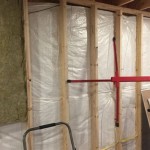How to Finish Basement Concrete Walls
Finishing your basement is a great way to add living space to your home, but the first step is preparing the walls, which are typically made of concrete. Concrete is a durable material, but it can be rough and unfinished, and it’s important to cover it with drywall, paneling, or another finish to create a more comfortable and inviting space.
Before you start, you’ll need to take some time to prepare the walls. This involves cleaning them, repairing any cracks or holes, and applying a concrete bonding agent to help the finish adhere to the walls.
Once the walls are prepared, you can start installing the finish. Drywall is a popular choice, as it’s relatively inexpensive and easy to install. It’s also available in various textures and finishes, so you can find a look that matches your style. If you’re looking for a more durable finish, you can opt for paneling or stone veneer.
No matter what type of finish you choose, be sure to follow the manufacturer’s instructions for installation. This will help ensure that the finish is applied properly and will last for many years to come.
Once the walls are finished, you can start adding your personal touches. Paint the walls your favorite color, add some molding or wainscoting, and hang artwork or pictures. With a little effort, you can transform your unfinished basement into a beautiful and inviting space that you’ll love spending time in.
Concrete Wall Preparation
Before you can start applying a finish to your basement concrete walls, you’ll need to take some time to prepare them. This involves cleaning them, repairing any cracks or holes, and applying a concrete bonding agent.
Cleaning the Walls
The first step is to clean the walls to remove any dirt, dust, or debris. You can do this using a sponge or brush dampened with water. Avoid using any harsh chemicals, as these can damage the concrete.
Repairing Cracks or Holes
Once the walls are clean, you need to check for any cracks or holes. Small cracks can be filled using a concrete repair kit. For larger cracks or holes, you may need to hire a professional to repair them.
Applying a Concrete Bonding Agent
Once the cracks or holes have been repaired, you need to apply a concrete bonding agent to the walls. This will help the finish adhere to the concrete better. You can apply the bonding agent using a roller or brush.
Concrete Wall Finishes
There are a variety of different finishes that you can apply to your basement concrete walls. The type of finish you choose will depend on your personal style and budget.
Drywall
Drywall is a popular choice for finishing basement concrete walls. It’s relatively inexpensive and easy to install. Drywall is also available in various textures and finishes so that you can find a look that matches your style.
Paneling
Paneling is another option for finishing basement concrete walls. Paneling is more durable than drywall, and it’s also available in various styles and colors. Paneling is a great option if you want a more traditional look for your basement.
Stone Veneer
Stone veneer is a great option if you want a more natural look for your basement. Stone veneer is made from real stone, which is cut into thin slices. Stone veneer is durable and easy to maintain.
Installing the Finish
Once you’ve chosen a finish for your basement concrete walls, you can start installing it. The installation process will vary depending on the type of finish you’ve chosen. However, there are some general steps that you can follow for most finishes.
Framing the Walls
The first step is to frame the walls. This involves installing studs around the perimeter of the walls. The studs will provide support for the finish.
Installing the Finish
Once the walls are framed, you can start installing the finish. For drywall, you’ll need to apply drywall compound to the studs and then attach the drywall panels. For paneling, you’ll need to nail or screw the panels to the studs. For stone veneer, you’ll need to apply mortar to the studs and then attach the stone veneer panels.
Finishing the Walls
Once the finish is installed, you’ll need to finish the walls. This involves painting the walls, adding molding or wainscoting, and hanging artwork or pictures. With a little effort, you can transform your unfinished basement into a beautiful and inviting space that you’ll love spending time in.

10 Ways To Cover Concrete Walls In A Basement Finish

How To Finish Basement Walls Hgtv

How To Insulate A Basement Wall Greenbuildingadvisor

Basement Finishing Do Not Paint Your Walls

Stylish Solutions Covering Unfinished Basement Walls Csg Renovation

How To Easily Add Knockdown Texture Concrete Basement Walls

How To Finish A Basement Wall Finishing Makeover Renovations

10 Ways To Cover Concrete Walls In A Basement Finish

Finishing Basement Walls How To Make Your Below Grade Space Livable Bob Vila

Dos And Don Ts Of Finishing Basement Walls Sheffield Homes Finished Basements More
See Also








